A Primer On Facebook Remarketing
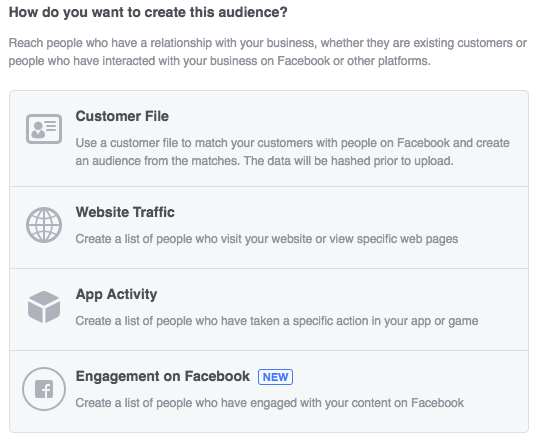
Remarketing is an important tool in the digital advertiser’s toolbox. It’s so important that almost every single advertising platform includes some form of it. Being able to reach out to people once you have some knowledge of their intent with your brand can lead to increased conversions and lower costs.
It’s often not a question of should we have remarketing, but why don’t we have remarketing.
Along those lines, Facebook has been beefing up its remarketing tools over the last year and continues to add new tools at a rapid pace. Whether it’s adding more options for customer match or targeting users depending on how they engage with your ad, Facebook has been beefing up its remarketing efforts.

As the tools change and update often, it’s easy to fall behind in how they can be used and what’s been added if you haven’t checked them out in a while.
Toward that end, we’ll introduce the four core remarketing areas shown above and discuss how they might be used to help your own remarketing strategies. We’ll then have a foundation for future articles that will go into greater detail on each of the four areas.
Customer File
Customer File is an audience creation tool that allows you to upload your own customer data to Facebook and build an audience with it.
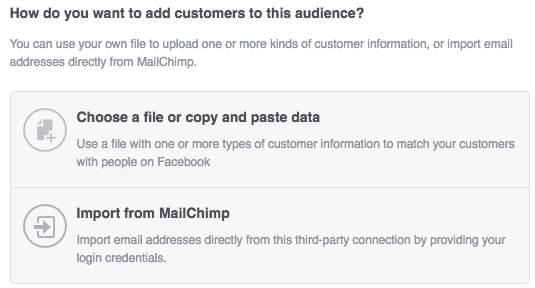
While email lists are the most common form of data uploaded by advertisers to target, it’s not the only type of data Facebook will accept. You could use everything from names and zip codes to cities and Facebook app user IDs. You can get granular, depending on what data you have and the strategy you are trying to implement.
Figure out which data you have access to and then test what works the best. A key focus is to watch your matching rate or how much of your data maps to actual Facebook users. A low match rate won’t help your cause.
Website Traffic
One of the most common remarketing techniques is to reach out to users who visit your site and don’t convert. Nearly every platform that offers remarketing offers some form for advertisers to use.
In Facebook’s case, you can remarket to people based on many different variables including site visitors, specific page visitors, and even time on site. You can then do custom combinations to get even more detailed in your targeting.
You will need to make sure a pixel is placed on your site to record visitors.
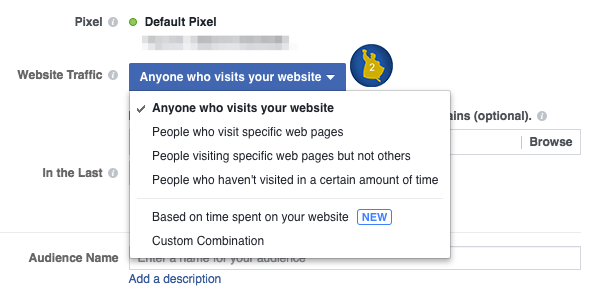
A 30-day window is a good start for looking at traffic numbers to remarket to, but use a time frame that is recent enough that people will remember visiting and long enough to get you a decent size audience. Then test different strategies for remarketing based on your insights, audience numbers, and strategy.
App Activity
Are you interested in remarketing based on people who’ve interacted with your app in some way, shape, or form? Then App Activity remarketing will serve your purposes well. It allows you to remarket to people based on actions they’ve taken or not taken (think installs, launches, or purchases), combined actions taken or not taken, and segments (iOS vs. Android, men vs. women, top 10% launches, etc.).
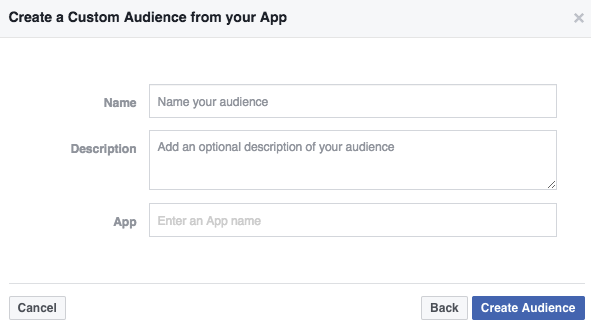
You can use this audience in a variety of ways to suit your needs like re-engaging users who’ve installed, but not launched your app or a variety of other scenarios you might want to target.
Engagement On Facebook
Remarketing to people based on their Facebook engagement is an interesting way to target. It allows you to essentially screen people with ads like video, lead generation, and canvas and then remarket to them based on how much they engaged with that ad.
For instance, you could put up a video on Facebook and remarket to people based on percent viewed or you could remarket to people who opened your lead gen ad and didn’t submit the form.
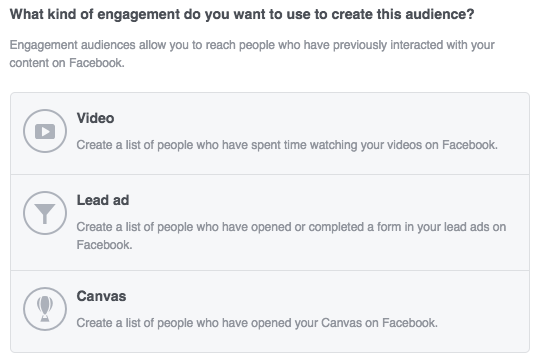
What’s interesting is it allows you to build remarketing audiences for actions that happen right inside Facebook and don’t necessarily require people to leave to go to a site. It all comes down to what types of creative you can create and what’s important to your strategy.
Conclusion
Now that you’ve been introduced to the four main areas of remarketing within Facebook, you should be able to dive deeper into each and discover how they might align with your own strategies.



